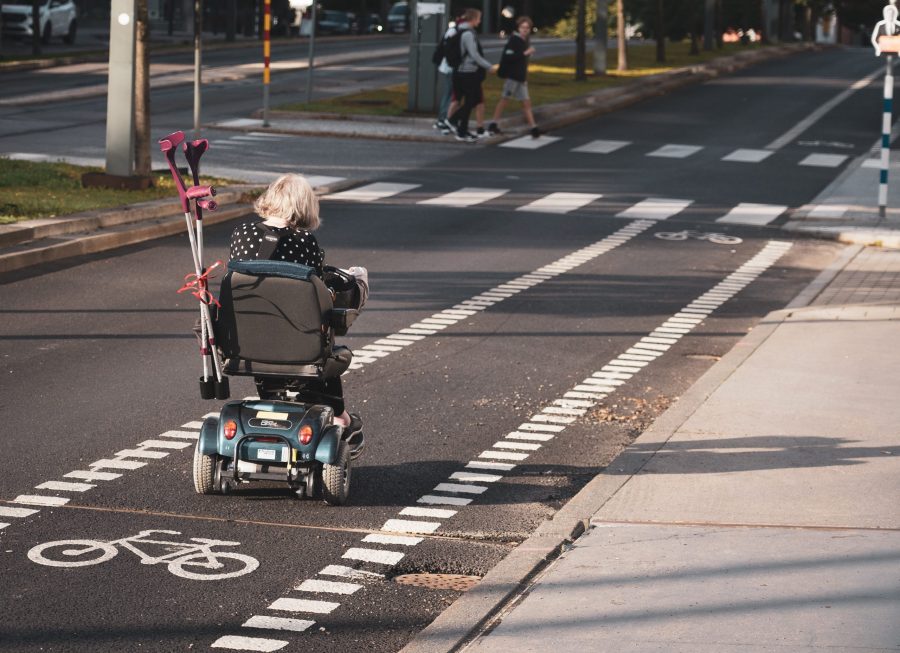3 min read.
Lucas Snaije is the Content & Communications Manager for BYCS and the Editor of BYCS Perspectives.
According to the World Bank and the WHO, over 1 billion people globally are living with a disability. This number represents 15% of the world population, with a large portion residing in cities. Within the context of rapidly increasing urbanisation, our planning practices must urgently address the fact that they have long been exclusionary for many, both in terms of societal and physical barriers. Long designed by and for able bodied men, our urban futures should instead reflect the diversity of human-kind and provide a supportive and nurturing environment for all bodies, abilities and needs. Transportation plays a crucial role in the quality of life of cities, and as active transportation advocates, we have a role to play in ensuring the demands and calls to actions we put forward are fully inclusive of persons with disabilities.
As the UN Secretariat for the Convention on the Rights of Persons with Disabilities has noted:
“Available evidence reveals a widespread lack of accessibility to built environments, from roads and housing, to public buildings and spaces and to basic urban services such as sanitation and water, health, education, transportation, and emergency and disaster response and resilience building and access to information and communications. These accessibility limitations contribute greatly to the disadvantage and marginalisation faced by persons with disabilities, leading to disproportionate rates of poverty, deprivation and exclusion”.
Within cycling advocacy specifically, there is a need to shift our discourse to normalise cycling for people of all backgrounds, ethnicities, ages, abilities and genders. The myriad of benefits that cycling confers holds true for persons with disabilities, if they can cycle and are able to access cycles. It indeed can provide a relatively low cost, door to door, completely independent, and sustainable mode of mobility. For two out of three disabled cyclists in the UK for example, riding a bike is easier than walking, easing joint strain, aiding balance and relieving breathing difficulties. Cycling is however often not seen as a viable mode of transportation, access to specialised cycles is low and expensive, cyclist with disabilities are disregarded in active transportation discourse, and the infrastructure is not supportive of their needs. According to research by Transport for London, 78% of disabled people are able to cycle, while 15% sometimes use a bike to get around.
Unless the baseline for cycling infrastructure and access is set at a comfort level for persons with the most needs, cycling for everyone will simply not become a reality. To ensure this, we must listen to and collaborate with persons with disabilities, uplifting and amplifying their voices, as well as work to further integrate their perspectives in our work. Only by having the most representative stakeholders in decision making positions will this change the outcomes of our advocacy for the better.

On the other hand, we must ensure that our visions of cities centred around active transportation do not exclude others. Not everyone can walk independently, and not everyone can cycle. Failing to recognise this an acute demonstration of obtuse privilege. Disability advocates have noted for example how the 15-minute city model for example also erases disabled bodies and movement by prioritising efficiency, which fits conveniently into a framework that values speed over access, or that active transportation can reinforce long standing forms of exclusion in the city. These perspectives and lived experiences must be integrated in the conversation. We need to remember that cycling is a means to an end, that is equitable, liveable, accessible and resilient cities. Overlooking the needs of 15% of our urban population will not allow this vision to be fully realised.
With these important topics in mind, we chose to centre our 10th edition of Perspectives on Accessible & Active Cities, exploring the barriers, opportunities and solutions to make the benefits of cycling, and more broadly the ability to comfortably navigate the city, inclusive and accessible to all.

